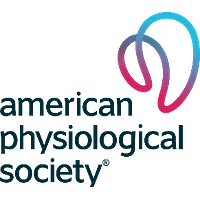The aim was to investigate the effect of the long-acting beta(2)-adrenergic agonist formoterol on muscle strength and power output, muscle metabolism, and phosphorylation of CaMKII Thr(287) and FXYD1 during maximal sprinting. In a double-blind crossover study, 13 males [VO2 (max): 45.0 +/- 0.2 (means +/- SE) ml(.)min(-1) .kg (-1)] performed a 30-s cycle ergometer sprint after inhalation of either 54 mu g of formoterol (FOR) or placebo (PLA). Before and after the sprint, muscle biopsies were collected from vastus lateralis and maximal voluntary contraction (MVC), and contractile properties of quadriceps were measured. Oxygen uptake was measured during the sprint. During the sprint, peak power, mean power, and end power were 4.6 +/- 0.8, 3.9 +/- 1.1, and 9.5 +/- 3.2% higher (P < 0.05) in FOR than in PLA, respectively. Net rates of glycogenolysis and glycolysis were 45.7 +/- 21.0 and 28.5 +/- 13.4% higher (P < 0.05) in FOR than in PLA, respectively, and the decrease in ATP content was lower (P < 0.05) in FOR than in PLA (3.7 +/- 1.5 vs. 8.0 +/- 1.6 mmol/kg dry weight). There was no difference in breakdown of phosphocreatine and oxygen uptake between treatments. Before and after the sprint, MVC and peak twitch force were higher (P < 0.05) in FOR than in PLA. No differences were observed in phosphorylation of CaMKII Thr(287) and FXYD1 between treatments before the sprint, whereas phosphorylation of CaMKII Thr(287) and FXYD1 was greater (P < 0.05) in FOR than in PLA after the sprint. In conclusion, formoterol-induced enhancement in power output during maximal sprinting is associated with increased rates of glycogenolysis and glycolysis that may counteract development of fatigue.

Effect of formoterol, a long-acting beta(2)-adrenergic agonist, on muscle strength and power output, metabolism, and fatigue during maximal sprinting in men
Review badges
0 pre-pub reviews
0 post-pub reviews
